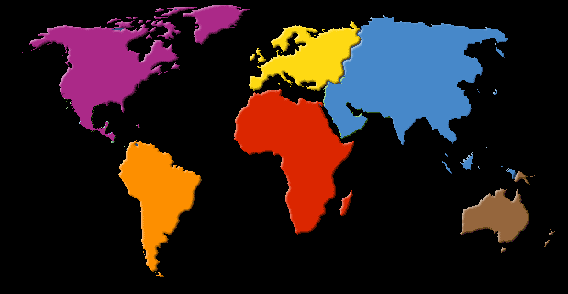Mitigating Downside With The Sortino Ratio Yahoo India Finance
Post on: 2 Июль, 2015 No Comment

In the traditional approach to portfolio construction, investors determine their risk tolerance and then select investments based on the amount of risk they are willing to take. In more technical terms, asset allocation decisions are driven by risk tolerance.
The Sortino Ratio represents the exact opposite of the traditional approach to investing. Rather than focusing on risk, the Sortino Ratio focuses on the investor’s desired return. Understanding the differences, both broad and subtle, between these approaches can help investors approach portfolio construction in the manner most consistent with their investment objectives .
Because of the risk-return tradeoff, investors must be aware of their personal levels of risk tolerance when selecting investments. The goal instead is to understand the balance between the level of returns generated and the amount of risk that must be taken in order to generate those returns. To evaluate this balance, investors need to be able to quantify and measure risk.
Sharpe Ratio
The Sharpe Ratio, derived in 1966 by William Sharpe, is one of the most commonly-used measures of risk and return. It is calculated by subtracting the rate of return on a risk-free investment from the rate of return for the investment under consideration and dividing the result by the standard deviation of the investment’s returns. The mathematical formula for calculating the Sharpe Ratio is:
Taking a closer look, the 10-year U.S. Treasury bond is generally viewed as a risk-free asset, and its return is used in the calculation of the Shape Ratio. Standard deviation is based on volatility. It operates on the assumption that returns conform to a normal bell-shaped distribution. Normal distributions give us handy guidelines: about two-thirds of the time (68.3%), returns should fall within one standard deviation (+/-); and 95% of the time, returns should fall within two standard deviations. Two qualities of a normal distribution graph are skinny tails and perfect symmetry. Skinny tails imply a very low occurrence (about 0.3% of the time) of returns that are more than three standard deviations away from the average. Symmetry implies that the frequency and magnitude of upside gains is a mirror image of downside losses.
The Sharpe Ratio has a long history of academic usage, and is useful when comparing investments against each other. Though not an entirely perfect measure on its own, the Sharpe ratio helps to make the performance of one portfolio comparable to that of another portfolio by making an adjustment for risk.
For example, let’s compare two managers and see how they stack up against each other. If manager A generates a return of 15% while manager B generates a return of 12%, it would appear that manager A is a better performer. If, however, manager A, who produced the 15% return, took much greater risks than manager B, it may actually be the case that manager B has a better risk-adjusted return.
To continue with the example, say that the risk-free rate is 5%, and manager A’s portfolio has a standard deviation of 8%, while manager B’s portfolio has a standard deviation of 5%. The Sharpe ratio for manager A would be 1.25 while manager B’s ratio would be 1.4, which is better than manager A. Based on these calculations, manager B was able to generate a higher return on a risk-adjusted basis.
Of course most investors do not view downside volatility and upside volatility as equivalent challenges. In fact, while downside volatility is a significant concern, upside volatility translates into unexpected gains and is likely to be a welcome development.
The Sortino Ratio
The Sortino Ratio, developed by Dr. Frank A. Sortino in 1980, refines the concept introduced by the Shape Ratio. While the Sharpe Ratio measures both upside and downside volatility, the Sortino Ratio captures only downside volatility. The Calculation of the Sortino Ratio is similar to the calculation of the Sharpe Ratio except it uses downside deviation for the denominator, ignoring positive returns, instead of standard deviation and replaces the risk-free rate of return with the rate of return from a target defined by the investor. The mathematical equation is as follows:
Taking a closer look, the target rate of return can be the rate needed to achieve a specific financial goal over a specific period of time, the rate needed to match or beat a given benchmark, or any other rate desired by the investor.
The focus on downside risk makes the Sortino Ratio more relevant to investors because it looks at potential losses as opposed to simply volatility. Investing, after all, is generally focused on making money not just on mitigating risk. Also, the investor-defined benchmark aligns well with the focus on making money. While the risk-free rate of return can certainly be used if it aligns with an investor’s objectives, measuring volatility against a risk-free benchmark may be a totally inappropriate comparison if, for example, the investor has a portfolio of large-capitalization stocks that are more likely to behave like the Standard and Poor’s 500, the Dow Jones Industrial Average or another equity benchmark. With the Sortino Ratio, investors are free to choose the benchmark that best matches their objectives.
In summary, the Sortino Ratio focuses on the rate of return required to achieve the investor’s goal. This puts the focus on what the investor is seeking to achieve — whether it is the cost of European vacation, the amount of money needed for a down payment on a beach house or a lump sum for retirement — and not on portfolio volatility.
More From Investopedia














